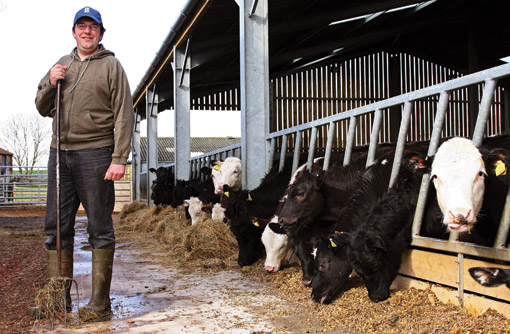Top tips for tackling worms and liver fluke

A sudden onset of liver fluke led Gloucester farmer Paul Westaway to revisit his worm and fluke control strategy to ensure steady and profitable weight gains across his beef herd.
Mr Westaway, who runs 220 Angus and Holstein cattle with his wife Kirsty on their 69ha county council farm in Dymock, relies on his Angus-cross heifers meeting a tight weight specification for Blade Farming of 520-530kg liveweight by 18 months old.
But an unexpected outbreak of liver fluke meant that cattle were taking longer to finish, which was forcing up production costs and risking the enterprise becoming a loss-making one.
“Until two years ago we had never seen fluke here,” says Mr Westaway. “Then we had a group that took about a month longer than target to finish.
Top tips for tackling worms and liver fluke
- Plan a control strategy with your vet or adviser
- Use wormers only when necessary and reduce dependency on them by adopting pasture management strategies.
- Administer wormers effectively and according to manufacturer’s instructions
“We need cattle to average 1kg a day weight gain throughout their 15 months here,” he says.
“If they stand still without us knowing for only a month, their growth rate has to be 17% higher in the final six months to reach target weight on time. High feed prices would make this a loss-maker.”
Abattoir feedback identified gastrointestinal worms and fluke as the issue – a problem that surprised Mr Westaway because of the farm’s light soil type and relatively low average annual rainfall of 64cm.
Following consultation with his vet, Mr Westaway now uses a strategic worming programme from the ML class (clear wormer) on all Angus-cross finishers to protect cattle against worms during the early- to mid-grazing season.
Then up to five weeks before housing, they are treated with a moxidectin-triclabendazole combination for worms and fluke.
Worming with a pour-on treatment at this time can reduce lungworm and associated pneumonia by enabling the animals to cough up worms while the cattle are outside and under low stress, says Basil Lowman of SAC Consulting.
“Administering treatment this way gives the best chance for any lung damage to be repaired and be as ready as possible for the stresses of housing when the time comes.
“Getting cattle worm-free at this time also produces extra liveweight gain of up to 0.15kg a day,” he adds. “Over 35 days that is worth about £10.76, which more than covers the treatment costs.”
For Mr Westaway, shifting the timing of worming and taking a stringent approach to treatment has helped him achieve steady growth rates across his herd.
“If a health problem due to parasites is allowed to develop, we have seen how apparently healthy animals can take a month longer than planned to reach their target weight,” he says.
“Feed and bedding costs alone for those extra days could be in the region of £30-50 a head on most farms, which can be the difference between profit and loss.”
